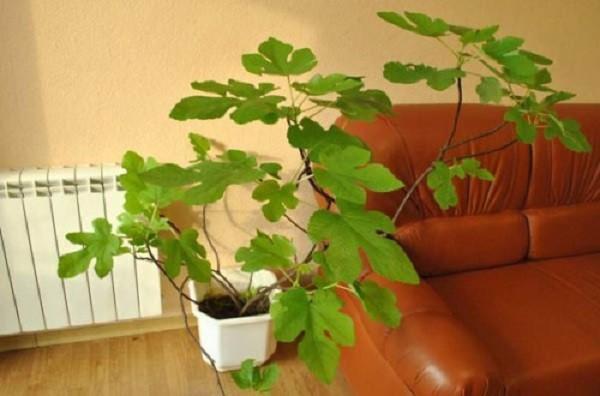The nuances of growing figs in indoor conditions
 Fig can be safely called a plant for novice flower growers, since it is very difficult to "kill" it. This is one of the most unpretentious flowers that grows even better indoors than outdoors. The constant warm indoor climate creates comfortable conditions for growing figs all year round. Unlike most indoor plants, which often have problems with the root system, the roots of figs are very viable and easily tolerate temporary difficulties in the form of drought or flooding.
Fig can be safely called a plant for novice flower growers, since it is very difficult to "kill" it. This is one of the most unpretentious flowers that grows even better indoors than outdoors. The constant warm indoor climate creates comfortable conditions for growing figs all year round. Unlike most indoor plants, which often have problems with the root system, the roots of figs are very viable and easily tolerate temporary difficulties in the form of drought or flooding.
Figs in scientific literature are also often called "ficus Karika".
Features of landing and transplantation
Not only the roots, but also the young cuttings of the fig, with which it propagates, are very "tenacious". Thanks to this, it is not worth planting them in too small a bowl, since this plant is characterized by rapid and active growth, and soon, instead of a small twig, a whole tree will flaunt in the pot.
However, a large enough pot as a starting container does not mean that it contains figs will always grow. Transplanting is an essential condition in fig growing. Within a year, the young plant will have to be transferred into a larger pot 3-4 times, reaching a container with a volume of 10 liters. It should be noted that when planting a seedling, you can not only "bury" the root collar, but also deepen it into the soil down to the first leaves. Figs will calmly tolerate this, moreover, this method stimulates the emergence of additional roots directly from the stem, which is in the ground.
It is necessary to replant an adult fig (as well as to carry out the first transshipment of a young flower) in December.
Winter plant transplant is due to the fact that in a closed room, the dormant period for figs is significantly reduced. Like all deciduous crops, in October it sheds its leaves and goes to rest. However, if in the open ground it lasts until spring, then in the house the figs "rest" no more than 2 months. The reason for this is the stable warm temperature and lighting. Therefore, in mid-December, growth processes are activated and the rest period ends.
The next transshipment of young figs should take place in May. The roots sticking out of the drainage holes serve as a signal to replace the flowerpot.
What kind of soil does figs like?
Perhaps the only circumstance that can harm figs is acidic soil. Ready-made peat mixtures from flower shops are completely unsuitable for this plant. It is best to prepare the mixture yourself using:
- one piece of sand and humus;
- two pieces of leafy soil.
How to properly care for a plant?
Even in winter, young figs need sufficient soil moisture, especially after the December transplant. To do this, loosen the soil in the pot well and spill the soil with warm water until the liquid begins to drain into the pan through the holes in the bottom.
In May, it is advisable to take the pot of figs out to the balcony or in the garden; the frequency of watering increases depending on the weather conditions (more often in heat, less often in cool and rainy weather). From mid-October, most varieties of figs begin to fall leaves. At this time, it must be returned to the room and watering must be reduced to a minimum (once a month is enough).
During the growing season, figs should be fed with mineral fertilizers once a week.A solution with superphosphate (5 g of the drug per 1 liter of water) works well.
It is necessary to carry out top dressing only on wet soil.